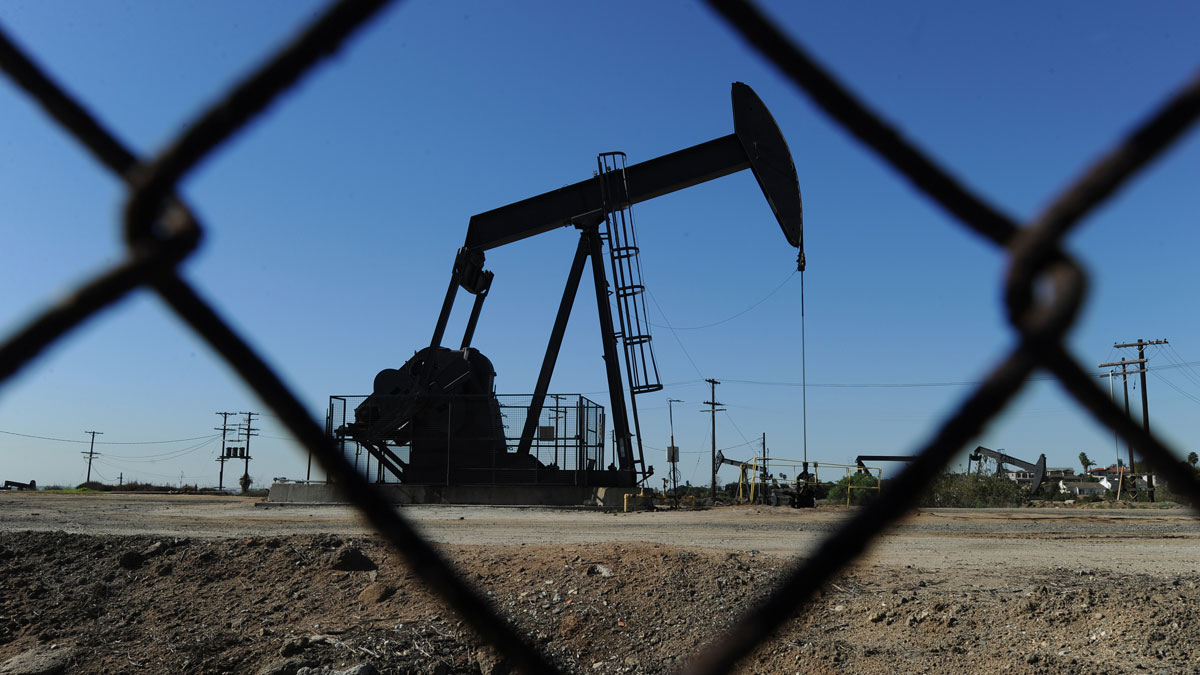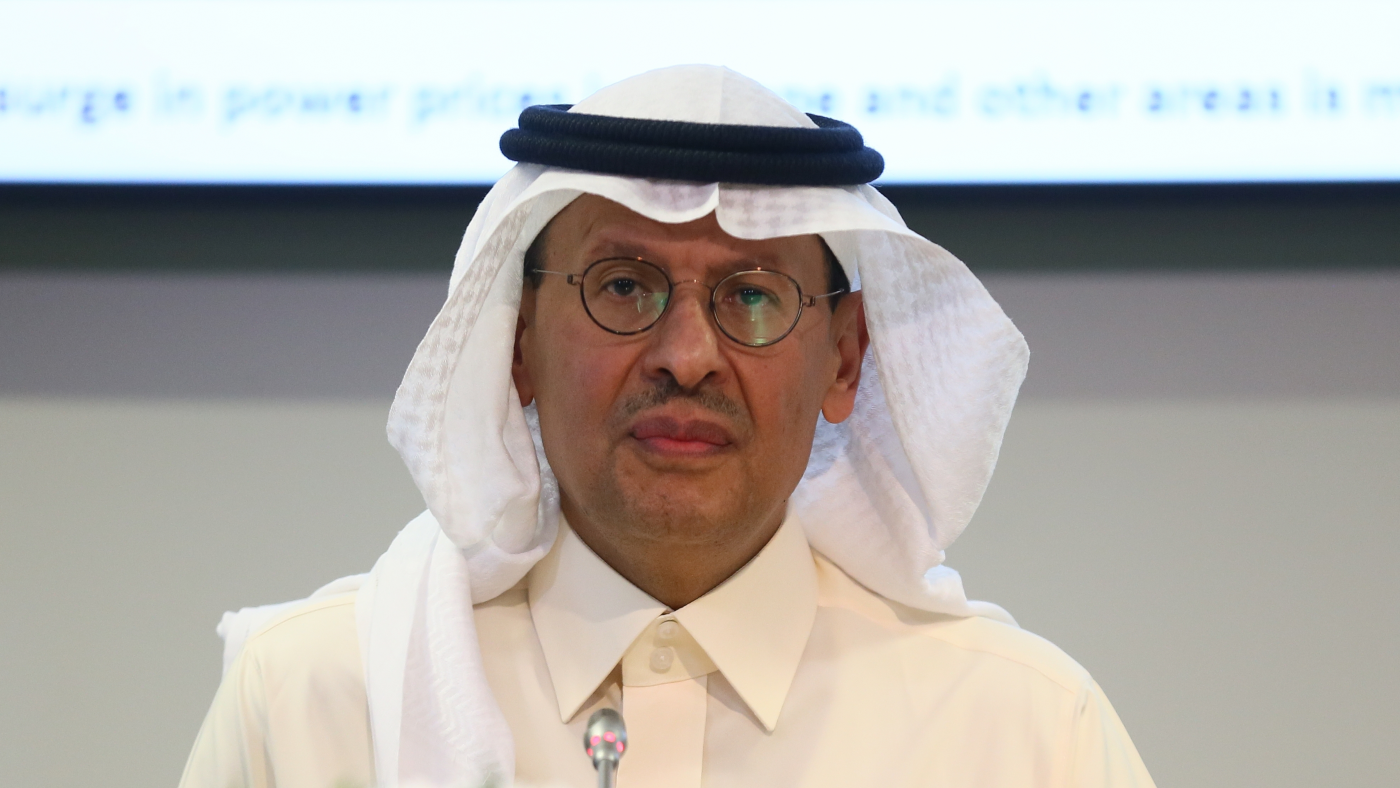Oil price posts two-year highs - but how long can it last?
Brent rose above $59 a barrel this week, its best third-quarter showing since 2004

Oil price passes $51, but is a plot twist coming?
8 June
Oil prices continued to advance beyond $50 today, as supply disruptions in Nigeria encouraged an ever more bullish atmosphere in the market.
In New York yesterday, the domestic price benchmark finished at $50.52 a barrel, up $0.16, or 0.3 per cent. In London, August Brent crude closed up $0.10, or 0.2%, to $51.54 a barrel. It has pushed on further this morning and is threatening to nudge above $52.
The Week
Escape your echo chamber. Get the facts behind the news, plus analysis from multiple perspectives.

Sign up for The Week's Free Newsletters
From our morning news briefing to a weekly Good News Newsletter, get the best of The Week delivered directly to your inbox.
From our morning news briefing to a weekly Good News Newsletter, get the best of The Week delivered directly to your inbox.
Leading the jump is the ongoing supply disruption in Nigeria, where militant group Niger Delta Avengers is threatening to close the country’s oil operation. Nigeria’s daily oil output has fallen to around one million barrels after multiple attacks on key pipelines and facilities.
Production in the US is also influencing prices. Domestic crude production fell by 250,000 barrels a day in May, the Energy Information Administration has announced, its biggest one-month decline in years.
Additionally, the Wall Street Journal says US crude stockpiles fell by 3.1 million barrels last week.
Stuart Ive, a client manager at OM Financial, now sees the oil price hovering above $50 for a while, in line with a growing sense that the threshold could have become a new floor.
A free daily email with the biggest news stories of the day – and the best features from TheWeek.com
"The 50 handle to prices came quickly and for now looks here to stay," he told MarketWatch.
However, some predict a plot twist could be just around the corner. There are fears that additional US shale rigs might be tempted to increase their output, flooding the market with more crude.
Morgan Stanley said "rigs may be returning in the best acreage, namely the Permian Basin". If this trend were to gather momentum, it could cause prices to tumble again.
Oil gains tempered after Janet Yellen rates speech
07 June
The oil price rally was tempered earlier today, after Federal Reserve chairwoman Janet Yellen’s speech hinted at gradual US interest rate increases this year despite a poor jobs report last week.
In London, Brent fell $0.09 to $50.46 a barrel, before betting back into its upward swing and reaching $51 by lunchtime. West Texas Intermediate was trading at marginally above $50.
"The upside was tempered by comments from Fed chair Yellen that were supportive to the dollar," Stuart Ive, a client manager at OM Financial, said.
MarketWatch predicts prices will "likely see-saw until there is more clarity on the fate of US interest rates".
Yellen had seemed to acknowledge that a rates rise would not happen in June – or possibly even in July – after a weak jobs report last week undermined the case for tightening borrowing costs. But she maintained that the macro picture was strong and that gradual increases would be "appropriate", sending the dollar higher.
Oil prices are sensitive to the ups and downs of the dollar because they are expressed in the currency, meaning a stronger greenback makes the commodity more costly for traders who deal in foreign currencies.
Fresh data due tomorrow will refocus investor attention on the global supply situation and could send oil higher or lower again.
On Wednesday, the US will announce its weekly crude production and inventories figures, while China will release its May crude import report. Strong demand and another draw on US reserves could add to the argument that the market is move back into balance.
"For now, with Brent prices at $50, investors and producers are reassessing their compass. Some might be waiting for the rally to be more sustainable," said Aaron Lynch, a commodities analyst at OptionsXpress.
Reuters says that the market is braced for a revival in US oil production after data showed that US drillers added rigs for only the second time this year.
Oil price struggles at $50 amid signs of recovering US output
06 June
Continuing supply disruption at a time of heightened demand, driven most recently by a slump in the dollar, has pushed the oil price back above $50 a barrel.
These reasons also lie behind the latest rise, with Reuters reporting that Nigerian output is now at a 20-year low and that the rebels behind sabotage attacks on pipelines are warning they could halt pumping altogether.
"So far, supply cuts like those in Nigeria or Libya have been met by rising output in the Middle East, especially Iran, which has been ramping up its output following the end of international sanctions against it in January," the reports adds.
"But Iran is returning to international oil markets more quickly than expected… and is fast hitting its maximum capacity. This means that further disruptions in global supplies might not be compensated by rising Iranian output."
Adding to the sense that the heavily oversupplied market is returning to balance, demand is seen to be on the rise, helped by a fall in the dollar on the back of a weak jobs report for the US economy on Friday.
Brent crude rose above $50 in Asian trading overnight and was at $50.25 at around 10.45am in London today. Its US counterpart, West Texas Intermediate, was 1.2 per cent higher at a little above $49.
Prices have not risen further because of continuing concern at the lack of a supply cap from Opec at a time when Saudi Arabia and Iran are fighting a fierce production turf war.
Supporting the more bearish view that $50 will act as a ceiling on the rally is data showing US output recovering for the second time this year last week.
It may have only been a modest rise in the number of active drilling wells from 314 to 325, but it could show that the recent oil price recovery is bringing new shale supplies back online that could reverse the supply turnaround.
Oil price settles above $50 – is this a ceiling or a floor?
3 June
Oil broke $50 again yesterday – and crucially, at the end of trading in New York, it reached a settlement above the threshold for the first time since November.
Having breached the psychologically important threshold last week, international benchmark Brent crude dipped back again as supply outages, which had given hope that the market was returning to balance, appeared to be unwinding.
It appeared to retreat further in afternoon trading in London yesterday, following the conclusion of the Opec meeting in Vienna, which again saw no deal to in any way constrain supply. At one point, Brent was below $49 a barrel.
Later, though, a report from the US energy watchdog showed another big draw on crude oil stockpiles in the country, of 1.4 million barrels. In addition to the loss of imports from Canada as tar sands production recovers following the recent wildfires, this shows "more than a year of low prices and spending cutbacks by oil companies are leading to shrinking supplies", says the Wall Street Journal.
The Energy Information Administration report also revealed US pumping has fallen to its lowest rate since September 2014.
In the wake of this update, traders began to talk up the positives even from the Opec meeting, which had been marked by an apparently more conciliatory tone.
Saudi energy minister Khalid al-Falih told Reuters the kingdom would be "gentle" in its approach, while new Opec secretary general Mohammed Barkindo said the group may come up with an output ceiling in the future.
Brent crude leapt above $50 – and remained marginally above this level in late morning trading in London today.
Writing on Market Watch, Anatole Kaletsky, the chief economist and co-chairman of Gavekal Dragonomics, says there is a growing sense that $50 may now become a price floor for recovering oil. Hedge funds and other investors have boosted their long positions – bets on increasing prices – "to an all-time high of 555,000 of the main oil contracts traded on the New York futures market".
But like a number of analysts, Kaletsky remains of the view that $50, the point at which recent rallies have run aground, will actually remain a ceiling. He points to the lack of a production cap at Opec as a sign that "oil is now operating under a regime of competitive pricing".
Kaletsky also speculates that when demand is high, as now, the oil price will be based on the "marginal production costs in US shale basins and Canadian tar sands", and that this will shift to the cost of extracting "cheap but less accessible oil in Asia and Africa" when demand wanes. This implies a price spread between $25 a barrel and "$50, $55, or even $60".
Oil price hops above $50 milestone ahead of Opec summit
2 June
Oil prices moved higher today as Opec members gathered in Vienna for a closely-monitored meeting.
Traders and investors are waiting eagerly for the outcome of the summit, at which the prospect of a collective output "ceiling" could re-emerge. That plan is rumoured to have the conditional support of Saudi Arabia, but is likely to be derailed by Iran's apparent rejection of the proposal.
In London, August Brent crude on the ICE Futures exchange rose 30 cents, or 0.6 per cent, to $50.03 a barrel. This took it back above the symbolic $50 milestone, although it was back at $49.90 by 10.30am in London. On the New York Mercantile Exchange, light, sweet crude futures for delivery in July rose 22 cents, or 0.5 per cent, to $49.26 a barrel, dropping to $49.17 by mid-morning.
Opec scrapped its traditional production ceiling in December, leading oil prices to plunge to 13-year lows within weeks. Despite the fresh rumours of a cap being reinstated, industry experts agree today's gathering will not lead to any significant change, as the players are mainly driven by competition for market shares.
"We see no reason as to why Opec members... would now choose to reverse policy," said BMI Research.
Tim Evans, a Citi Futures analyst, agreed: "We think that the production freeze agreement last formally rejected with Brent trading at $40-45 will be rejected again Thursday," he said.
The markets will also be watching the weekly US crude data, which is released later today. The Wall Street Journal estimates a 2.8 million barrel drop in domestic stockpiles, while industry group American Petroleum Institute is expecting a 2.4 million barrel expansion.
This could limit a fall in the event that Opec does reject a deal, with many analysts expecting the oil price to remain in its tight range in the high $40s in the coming sessions.
New: try our free iPhone app, The WeekDay, for all the news that matters and nothing more. Click here for twice-daily digests distilled from the best of the British and international media
-
 How might the Israel-Hamas war affect the global economy?
How might the Israel-Hamas war affect the global economy?Today's Big Question Regional escalation could send oil prices and inflation sky-high, sparking a worldwide recession
-
 Recent mega-mergers could signal a turning point for the US oil industry
Recent mega-mergers could signal a turning point for the US oil industryTalking Point Both Chevron and Exxon have recently spent billions to acquire smaller oil companies
-
 Has Saudi Arabia lost control of oil prices?
Has Saudi Arabia lost control of oil prices?Today's Big Question Kingdom goes it alone to cut production, risking tension with US and reigniting cooling inflation in Europe
-
 US angered by Opec+ oil cut
US angered by Opec+ oil cutSpeed Read Energy prices to rise further as producers slash supply by two million barrels a day
-
 Global oil demand forecast lowered for 2020 and 2021
Global oil demand forecast lowered for 2020 and 2021Speed Read IEA report says jet fuel demand remains the major source of weakness
-
 Are US-Iran tensions flaring again?
Are US-Iran tensions flaring again?In Depth Trump threatens military action over Twitter
-
 Can a deal be struck to raise oil prices?
Can a deal be struck to raise oil prices?In Depth Opec+ will convene today over video link in a bid to boost crude
-
 What do negative oil prices mean?
What do negative oil prices mean?In Depth Perfect storm of oversupply and storage shortages sees producers paying to get rid of US crude

